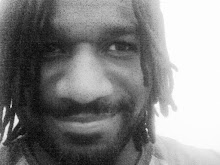by Gareth Porter, The Nation

Last time it was scary speed-boats, this time it's a bogus link to a bombing in Argentina -- one by one, Iran hawks' lies keep unraveling.
Research for this article was supported by the Investigative Fund of The Nation Institute.
Although nukes and Iraq have been the main focus of the Bush Administration's pressure campaign against Iran, US officials also seek to tar Iran as the world's leading sponsor of terrorism. And Team Bush's latest tactic is to play up a thirteen-year-old accusation that Iran was responsible for the notorious Buenos Aires bombing that destroyed the city's Jewish Community Center, known as AMIA, killing eighty-six and injuring 300, in 1994. Unnamed senior Administration officials told the Wall Street Journal January 15 that the bombing in Argentina "serves as a model for how Tehran has used its overseas embassies and relationship with foreign militant groups, in particular Hezbollah, to strike at its enemies."
This propaganda campaign depends heavily on a decision last November by the General Assembly of Interpol, which voted to put five former Iranian officials and a Hezbollah leader on the international police organization's "red list" for allegedly having planned the July 1994 bombing. But the Wall Street Journal reports that it was pressure from the Bush Administration, along with Israeli and Argentine diplomats, that secured the Interpol vote. In fact, the Bush Administration's manipulation of the Argentine bombing case is perfectly in line with its long practice of using distorting and manufactured evidence to build a case against its geopolitical enemies.
After spending several months interviewing officials at the US Embassy in Buenos Aires familiar with the Argentine investigation, the head of the FBI team that assisted it and the most knowledgeable independent Argentine investigator of the case, I found that no real evidence has ever been found to implicate Iran in the bombing. Based on these interviews and the documentary record of the investigation, it is impossible to avoid the conclusion that the case against Iran over the AMIA bombing has been driven from the beginning by US enmity toward Iran, not by a desire to find the real perpetrators.
A 'Wall of Assumptions'
US policy toward the bombing was skewed from the beginning by a Clinton Administration strategy of isolating Iran, adopted in 1993 as part of an understanding with Israel on peace negotiations with the Palestinians. On the very day of the crime, before anything could have been known about who was responsible, Secretary of State Warren Christopher blamed "those who want to stop the peace process in the Middle East"--an obvious reference to Iran.
William Brencick, then chief of the political section at the US Embassy in Buenos Aires and the primary Embassy contact for the investigation, recalled in an interview with me last June that a "wall of assumptions" guided the US approach to the case. The primary assumptions, Brencick said, were that the explosion was a suicide bombing and that use of a suicide bomb was prima facie evidence of involvement by Hezbollah--and therefore Iran.
But the suicide-bomber thesis quickly encountered serious problems. In the wake of the explosion, the Menem government asked the United States to send a team to assist in the investigation, and two days after the bombing, experts from the Bureau of Alcohol, Tobacco and Firearms arrived in Buenos Aires along with three FBI agents. According to an interview the head of the team, ATF explosives expert Charles Hunter, gave to a team of independent investigators headed by US journalist Joe Goldman and Argentine investigative journalist Jorge Lanata, as soon as the team arrived the federal police put forward a thesis that a white Renault Trafic van had carried the bomb that destroyed the AMIA.
Hunter quickly identified major discrepancies between the car-bomb thesis and the blast pattern recorded in photos. He wrote a report two weeks later noting that in the wake of the bombing, merchandise in a store immediately to the right of the AMIA was tightly packed against its front windows and merchandise in another shop had been blown out onto the street--suggesting that the blast came from inside rather than outside. Hunter also said he did not understand how the building across the street could still be standing if the bomb had exploded in front of the AMIA, as suggested by the car-bomb thesis.
The lack of eyewitness evidence supporting the thesis was just as striking. Of some 200 witnesses on the scene, only one claimed to have seen a white Renault Trafic. Several testified they were looking at the spot where the Trafic should have been when the explosion occurred and saw nothing. Nicolasa Romero, the wife of a Buenos Aires policeman, was that lone witness. She said she saw a white Renault Trafic approach the corner where she was standing with her sister and her 4-year-old son. But Romero's sister testified that the vehicle that passed them was not a white Trafic but rather a black-and-yellow taxi. Other witnesses reported seeing a black-and-yellow taxi seconds before the explosion.
Argentine prosecutors argued that pieces of a white Trafic embedded in the flesh of many of the victims of the explosion proved their case for a suicide bomb. But that evidence was discredited by Gabriel Levinas, a researcher for AMIA's own legal team. Levinas is a member of a leading Jewish family in Buenos Aires who had published a human rights magazine during the dictatorship (his uncle's car was used to kidnap war criminal Adolf Eichmann and spirit him off to Israel for trial in 1982.) Read on.











0 Comments:
Post a Comment
Subscribe to Post Comments [Atom]
<< Home